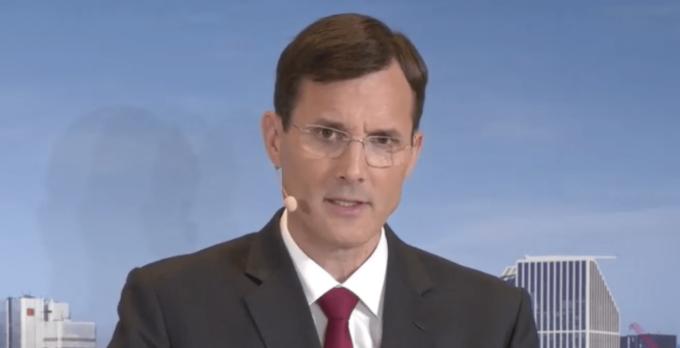Wong Siew Loong joins Kerry Logistics as CCO and MD South-east Asia
Kerry Logistics Network (KLN) has announced the appointment of Wong Siew Loong as its chief ...
BA: WIND OF CHANGEMAERSK: BULLISH CALLXPO: HEDGE FUNDS ENGINEF: CHOPPING BOARDWTC: NEW RECORDZIM: BALANCE SHEET IN CHECKZIM: SURGING TGT: INVENTORY WATCHTGT: BIG EARNINGS MISSWMT: GENERAL MERCHANDISEWMT: AUTOMATIONWMT: MARGINS AND INVENTORYWMT: ECOMM LOSSESWMT: ECOMM BOOMWMT: RESILIENCEWMT: INVENTORY WATCH
BA: WIND OF CHANGEMAERSK: BULLISH CALLXPO: HEDGE FUNDS ENGINEF: CHOPPING BOARDWTC: NEW RECORDZIM: BALANCE SHEET IN CHECKZIM: SURGING TGT: INVENTORY WATCHTGT: BIG EARNINGS MISSWMT: GENERAL MERCHANDISEWMT: AUTOMATIONWMT: MARGINS AND INVENTORYWMT: ECOMM LOSSESWMT: ECOMM BOOMWMT: RESILIENCEWMT: INVENTORY WATCH

DHL is betting on an expected surge in logistics demand from the fossil-free energy sector to drive an “audacious” 50% upturn in group revenue by the end of the decade.
Presenting the DHL Group Strategy 2030 to investors in Frankfurt yesterday, bullish CEO Tobias Meyer (pictured) said ecommerce, digital sales, geographic tailwinds, life sciences and healthcare, new energy and sustainability would form the strategy’s foundations.
“We are ideally positioned to seize growth opportunities in a rapidly changing world, thanks to our well-balanced, diversified portfolio,” he said.
“We want to grow faster and more profitably while decarbonising our business. We will fortify our market-leading position in global logistics with a strong focus on quality and on servicing the needs of fast-growing industry segments.”
And, the company said, the transformation of both the renewable energy and automobile sectors was calling out for “dedicated logistics solutions”.
Tapping into this market – and its 15% compound annual growth rate (CAGR) – with plans to offer specialist windmill blade handling, development of battery energy storage systems and logistics for electric vehicles and solar farms, presented a €3bn growth opportunity.
During the presentation, DHL said the “energy sector offered high growth potential, especially with new market participants developing into global players”.
The group also announced it would create a new brand catering for the life sciences and healthcare sector, as DHL was “strongly positioned to address structural shifts in the pharma market” which had seen increased dependence on specialised logistics.
Pointing to an expected CAGR of 10% for the remainder of the decade, it was suggested that life sciences and healthcare could add €5bn of revenue by 2030.
Later, one analyst said it was difficult to determine precisely what provoked the “audacious” plan, noting that, together with investor unhappiness at the group’s share price, the company could also have been responding to the strategy of carriers.
“It could also be the takeover of Schenker, the restructuring of K+N and FedEx (and UPS), or a mix of all of that,” they told The Loadstar.
Comment on this article